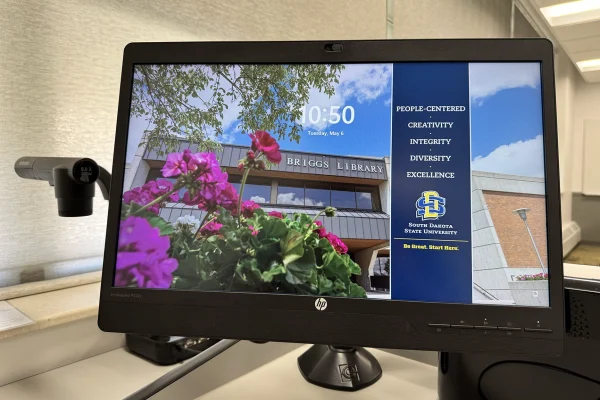Fewer committees means less confusion for Faculty Senate and administration
September 28, 2010
Emma DejongManaging Editor
Fifty-two Faculty Senate and administrative committees have been cut and combined to form 16 committees.
Faculty Senate Vice President Robert Watrel said all the committees should be ready to meet in the next couple weeks.
“It will be a lot less cluttered,” Students’ Association Vice President Erin Kennedy said.
Each committee is made up of about 12 or 13 members, including representation that varies from administration, faculty, employees and students. Except for students, all members serve staggered three-year terms.
Watrel said the committees’ duties consist of “pretty much policy recommendations.” The committees each have varying degrees of work, as they all deal with different matters. They are to meet regularly and analyze appropriate issues so they can make recommendations to the Faculty Senate and administration.
At the Sept. 14 Faculty Senate meeting Sen. Patty Hacker expressed her concerns regarding the influence of a committee’s decisions.
“Exactly what is going to be the weight that a committee has in terms of actually affecting policy?” Hackler said.
Watrel agreed with Provost Laurie Nichols who said, “this will become what [committees] make of it.”
“I think they certainly have more power than they did before,” Watrel said. “It depends how they pursue these things.”
Watrel said that because the new committee structure is new for SDSU, it will take time to see how issues play out.
“This is new ground,” Watrel said. “It’s going to take a little while to sort out some kinks.”
The goal was to have the committees up-and-running by October, and Nichols said they “hope to have all appointments done by this Thursday.”
“The sooner things run, the better it’s going to be,” Watrel said.
However, Kennedy hoped they would have been ready closer to the start of the school year.
“It was just a little more time-intensive than it was intended to be,” Kennedy said.
Almost all the committees have student membership. This includes various students, such as SA senators, residence hall representatives, student employees and other students as well. They all serve on the committees for one-year terms.
“Our role is to make sure the student voice and student opinion is being heard and making sure the students are being aware of what’s going on on-campus,” Kennedy said.
Two committees are being chaired by students: the university activity fee and budget committee and the student conduct committee.
“I want to get the budgeting process up and rolling, and I’m waiting for (other committees to be finalized first),” said SA Finance Chair Anthony Sutton, who is the chairperson for UAFBC.
Kennedy said that having students with such prominent leadership roles would create “a great student and administration partnership.” However, as students’ positions are only for a year, she said they have a plan to maintain good communication to help with the yearly transitions.
“It’s sort of our goal to make sure there are older senators and younger senators involved with these committees,” Kennedy said.
In the end, Wastrel said the results of the new structure are to-be-seen.
“I don’t think anybody knows for sure where this will go,” Watrel said. “I guess time will tell.”
The 16 Committees:
Academic Affairs Committee
Campus Planning and Design Committee
Diversity Enhancement Committee
Environmental Stewardship and Sustainability Committee
Faculty Development and Leadership Committee
Information Technology Committee
Integrated Marketing and Communications Committee
Intercollegiate Athletic Board
International Committee
Library Committee
Parking and Traffic Committee
Research and Scholarship Committee
Student Conduct Committee
Tenure and Promotion Committee
The Undergraduate Experience Committee
University Activity Fee and Budget Committee





















